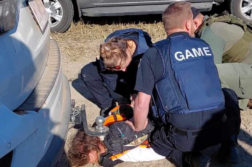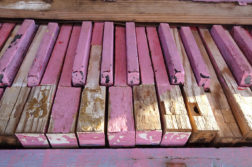Once upon a time, an Australian federal government decided that the lives of countless women in developing countries were less important than the sale of Telstra. In 1996, in return for Senator Brian Harradine’s support of the Telstra sale, the Howard government placed a ban on the provision of Australian foreign aid to abortion-related services.
For a little while in June last year, it seemed like we might care about the women affected by this ban. Small noises were made about debating the issue in parliament. We’re thinking about it, people from the Department of Foreign Affairs kept mumbling.
Foreign Minister Stephen Smith and his colleagues in the Labor caucus, however, are slow thinkers.
While the Federal Government has been pondering how much of a hassle it is for Australia to lift its ban, the following things have happened: The season changed four times; My sister had a child, who is now just about to start crawling; An estimated 5 million women became temporarily or permanently disabled after seeking out an unsafe abortion; And an estimated 67,000 women died from complications associated with unsafe abortions, leaving many more children without mothers.
Australia and the United States were once the only countries in the world where an equivalent abortion ban applied to the provision of foreign aid. Under Barack Obama, the US has now lifted the ban, adding to the pressure on Australia to follow suit. It took Obama all of four days in office to reverse the legislation. Kevin Rudd, on the other hand, has been side-stepping the issue for 15 months, presumably in an effort to keep the important Senate vote of Family First’s Steve Fielding on side.
In essence, the ban means that Australian aid funds are not available to activities involving abortion training, services, research, or provision, even where the life of the mother is at stake.
Not only does Australia refuse to train doctors in the provision of safe abortions, we won’t provide funds to any groups or organisations that dare to give women information on abortions, whether or not the organisation itself performs them. Doctors receiving Australian Government aid are therefore unable to counsel women who are seeking an abortion, or to help them differentiate between a safe and an unsafe abortion.
This is despite the fact that abortion is freely available to women in our own country, and despite the fact that Victoria has recently decriminalised the procedure. The only message one can take from this is that the Australian Government believes women in poor and developing countries are not entitled to the same rights as Australian women.
Providing funds for abortion services and counselling is not about "advocating" abortion. It is about recognising that women will seek to abort regardless of how you might personally feel about it, and that access to abortion information and services is a key element in any effective family planning policy that has women’s health as its final goal. The truth is that the number of women who will seek abortions remains roughly the same regardless of whether or not the abortion is provided in a safe, legal, medical environment, or whether the procedure is unsafe and illegal.
Successive studies have shown that women who want abortions will find a way to have them, regardless of their legality and whether or not Australia deigns to help them. What separates women’s experiences of abortion in the developed world from those in the developing world is that 92 per cent of abortions in the developed world are safe, while over half the abortions performed in the developing world — 55 per cent — are unsafe.
I use the word "unsafe" to describe these abortions because that’s how the World Health Organization categorises them. But "unsafe" seems a very pedestrian, mundane little word for the procedures it actually describes. The methods of abortion that leading sexual health research centre the Guttmacher Institute categorises as "unsafe" — and which women regularly obtain for themselves when safe procedures are unavailable — include: Drinking turpentine, bleach or tea made with livestock manure; Inserting herbal preparations into the vagina or cervix; And placing foreign bodies, such as a stick, coat hanger or chicken bone, into the uterus.
Australian funding of family planning programs across the entire aid sector has declined as a percentage of total aid from 0.44 per cent to 0.07 per cent since 1996. In absolute terms, it has dropped from $6.8 million in 1995/6 to a paltry $2.28 million in 2006/07. Concerned NGOs have argued forcefully that the guidelines introduced by Senator Harradine in 1996 are acting as a disincentive to Australian aid providers attempting to deliver sexual and reproductive health rights.
And still Minister Smith considers, and waits, and hopes we’ll forget about the hypocrisy of refusing to provide the same basic services for women in our aid programs that we recognise as central to women’s health within our own borders.
All of this pain, just so that the Federal Government doesn’t have to step on the toes of Senator Steve Fielding and the pro-life lobby.
Donate To New Matilda
New Matilda is a small, independent media outlet. We survive through reader contributions, and never losing a lawsuit. If you got something from this article, giving something back helps us to continue speaking truth to power. Every little bit counts.



